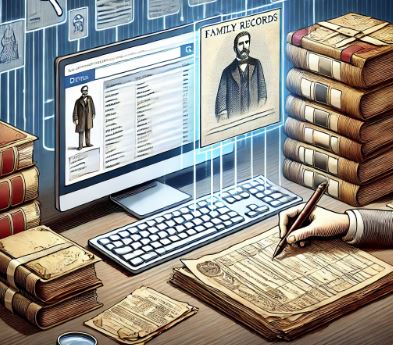
I honestly never thought I'd be blogging about my pet's DNA. I laughed when Ancestry.com came out with their DNA test kits for dogs. At the time, I thought it was just a dumb idea.
If you've ever attended my lectures you might have heard me say that I'm a mutt. That's a dog with no definable breed or heritage. Um, that would be me. I'm often dog-tired after spending too much time doing genealogy research and no matter what the ethnicity estimates report about my ancestry, they often get updated as my people were everywhere!
I am leery of people who boast that their heritage is purely from one location. Brings to my mind Nazism, the Ku Klux Klan, and Harry Potter. To be clear, I like Harry Potter; I just don't like people who think they are superior because of their pure blood lineage.
While my husband and I were in Great Britain one of my adult kids decided to perform DNA swabs of my two elderly cats as a pre-Christmas gift.
Upon my return, when I was informed about the testing, I had a hard time not rolling my eyes. I would not have spent money on that. Both of my cats were found at schools my husband and I used to work at. The oldest, Charlie, was born to feral parents and I only have him because a cold hearted employee ordered one of the clerical staff to snatch him and his two siblings from their mother so her two kids could play with them over summer break. This mean individual was told that they were too young, not yet weaned, and that their mother would reject them if she changed her mind of keeping the cats. She didn't care and at the end of the day when her husband came to pick up the kids he said he wasn't taking the flea infested kittens home. Well, duh! They had flea because they were born and reared outside. She told the clerical staff to call the county animal shelter. The shelter employee arrived and announced that all three would be euthanized unless we could also provide the mother since they were not weaned. That was impossible since she was feral and he only gave us an hour. The psychologist and I took the kittens home, I took two and she took one. We always thought Charlie was part Maine coon because like his daddy who used to terrorize the children walking to after care through he woods, he was a big boy. We also thought he might have come from Puerto Rico because he only quieted when we played that type of music and he loved hot sauce. In hindsight, I should have realized he was born in a Hispanic neighborhood and his mom must have eaten a lot of Mr. Empanada's food during her pregnancy. Unfortunately, Charlie's sister, Ginger, disappeared when we went to one of our children's college graduations; a neighbor was supposed to be watching them. Ginger slipped out and was never seen again. She was small and orange, like her mom.
Parker was found in the second floor hallway of the school my husband where my husband worked. Likely a middle school kid had brought him in a backpack and he somehow escaped during the day. As a counselor, my husband was called to do something about the cat. That something was get him milk from the cafeteria since he was emaciated and bring him home. He looks a little like a Siamese but we had no idea of where he had originated.
I was good with what we suspected about their heritage. I love them for who they are and not where their ancestors came from.
I really didn't expect any big surprises when we got their DNA results but my family and I had the biggest laugh as the cat's DNA matched regions of the world where our ancestors had once lived. Go figure!
Charlie is mostly Siberian with a touch of Norwegian and Persian. The Siberians are big and poor Charlie was always on a diet as our vets thought he was just too heavy. Nope, he was always in the normal range for his ancestry. (Going to use this during my next annual physical.) Charlie became diabetic earlier this year; that also goes with his majority breed. I was happy to share these results with our current vet.
Parker was primarily Norwegian but also of a California breed and some Egyptian Mau. No Siamese! The Egyptian explains why he had spots in his younger years. The Norwegian explains his quirky personality. If you hold him he drops to dead weight. He also loves to pretend he's afraid of his shadow and runs from it, then looks at you with sad eyes wanting you to pick him up. Yes, he has us humans trained.
The Californian part, though, really made sense. Parker was probably born in Florida where there was an air force base in close proximity to where he was found. I suspect a military family brought one of his parents with them when they relocated to Florida.
My husband is 75% Swedish, I wouldn't doubt that his ancestors once had Norwegian cats in their household. My mtDNA does cross through Persia and I have half that is eastern European. Charlie has always been closest to me. I wouldn't be surprised to learn that those cats we saw in my family's villages in Croatia were very distant cousins of Charlie. Likewise, those Swedish cats we saw in April could also be related distantly to Parker. Very weird in a fun way!



